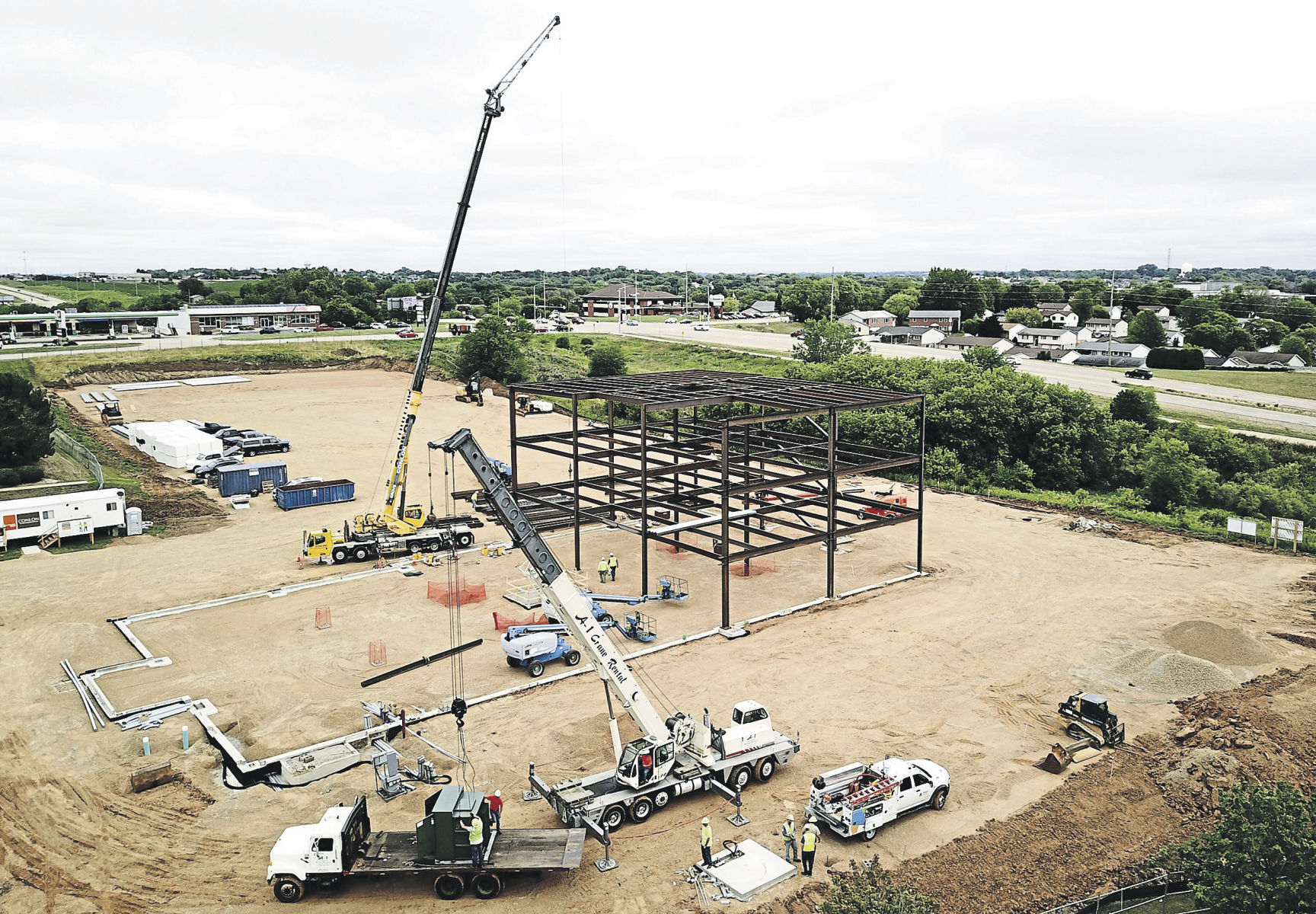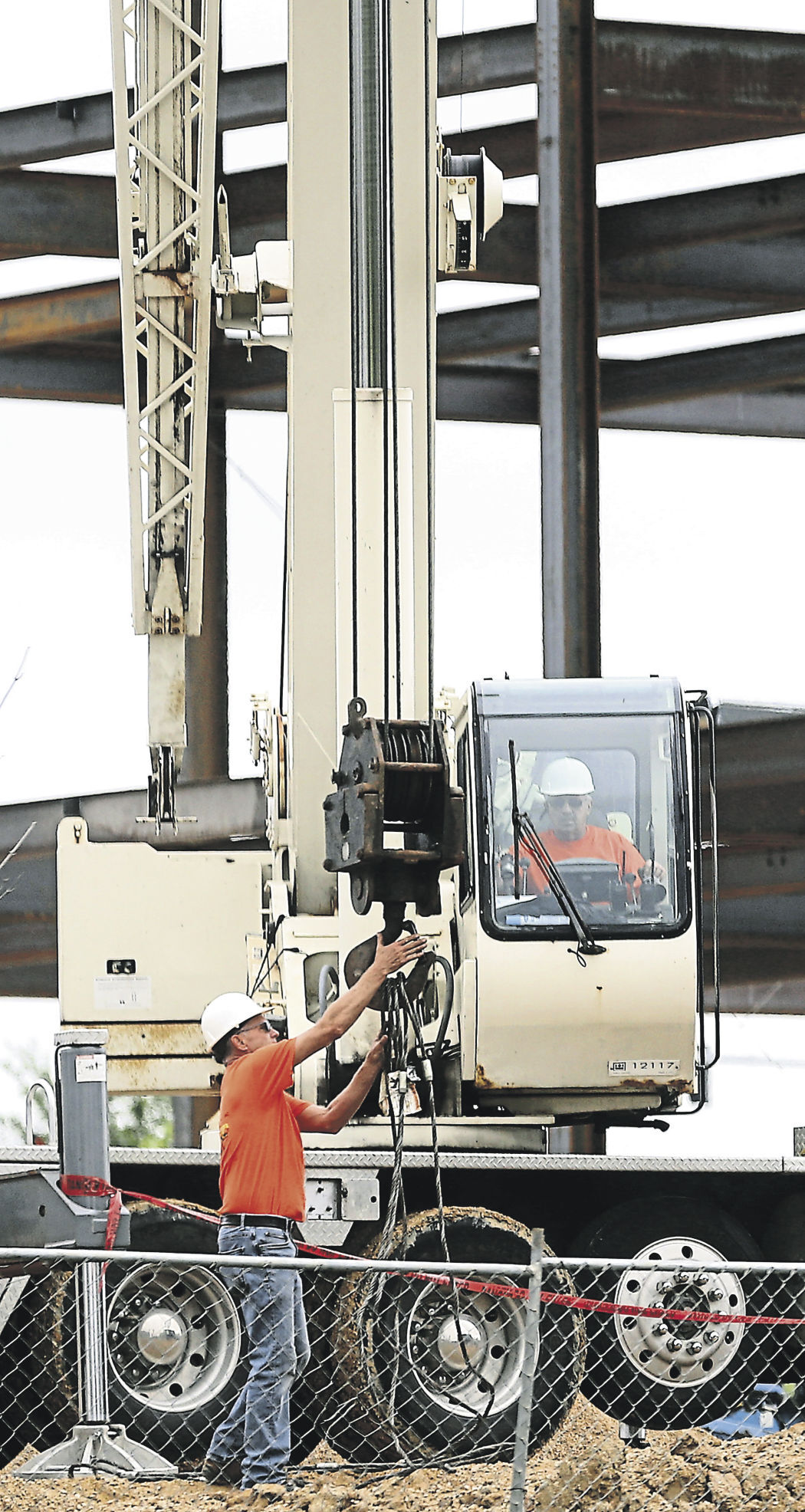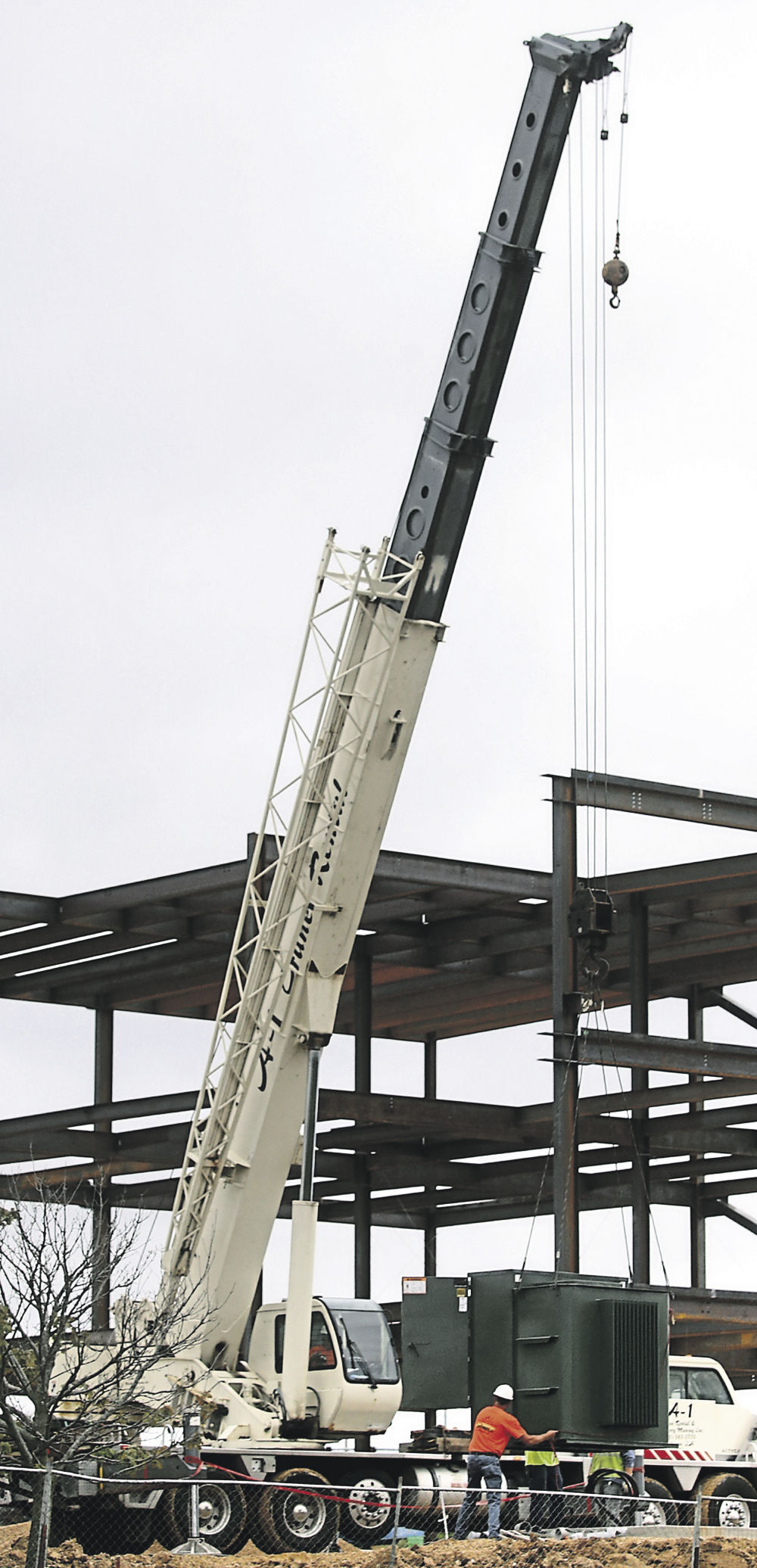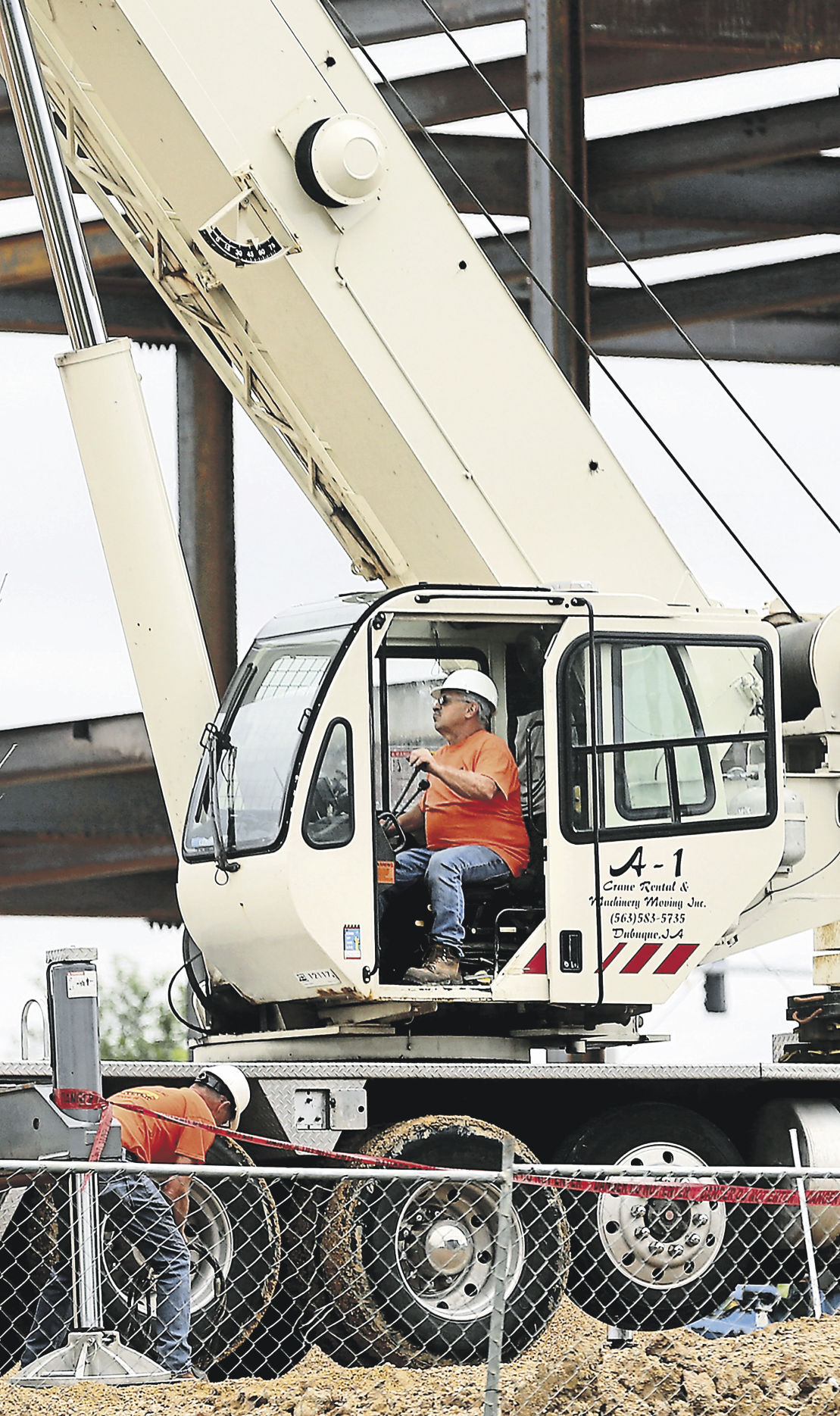525 E 19th St, Dubuque
563-583-5735
www.a-1cranerental.com
302 5th St. N.W. Dyersville, Iowa
563-875-8135
tegelerwreckerandcrane.com
One of Joe Lawler’s favorite parts of his job is the tangible progress he can see after a day’s work is complete.
“When you start out in the morning it’s just nothing but bare ground, and by the end of the day, you might have a finished first or second story,” he said.
Lawler has worked as a crane operator for A-1 Crane Rental & Machinery Moving for the past 13 years. The Dubuque business is one of several area companies which provides crane and lift services for a variety of industries.
According to office manager Karen Hoefler, A-1 Crane Rental owns 11 hydraulic cranes, ranging from 4.5-ton to 240-ton machines. It also has access to cranes that can lift up to 400 tons through its sister company, Tri-State Crane & Rigging Service in Cedar Rapids.
A-1 Crane Rental works with general contractors and companies in industries ranging from agriculture to energy. On any given day, they might lift a heating or cooling device onto a rooftop, set trusses for a construction project or move heavy machinery for a manufacturing company.
Lawler enjoys the variety that comes with the job.
“It’s something new every day … and you get to do some really cool stuff,” he said. “We’ve lifted everything from MRA (magnetic resonance angiography) machines to statues.”
For Lawler, a job begins by obtaining the necessary information from the client. This includes not only the weight of the object and the height and distance it is to be moved, but also factors such as ground condition and hazards such as sewer tunnels or power lines.
Hoefler said each of A-1’s cranes has an associated “chart book,” which helps operators select the best crane for each job.
“If something is so many feet away and so high up, and this much weight, (the chart book) will tell us if the crane can pick that or not,” she said.
Sometimes, the best machine might not be a crane at all.
“Our latest purchase was a 40,000 to 60,000-pound forklift, which is used for heavy machines and manufacturing companies,” Hoefler said.
Other area businesses use a variety of machines to handle the heavy lifting.
Jake Schroeder, with Tegeler Wrecker & Crane in Dyersville, said the business owns rotating wreckers that can lift up to 85 tons. These machines differ from traditional wreckers in that the boom can rotate 360 degrees rather than simply going up and down.
“They’re made for winching, pulling, lifting,” he said. “They’re a lot more geared toward, say, recovery of large semis out of ditches, whereas a crane is geared toward lifting and lowering vertically.”
Schroeder said another major difference between a crane and a rotating wrecker is the boom length.
“We have about 50-foot of boom on some of these wreckers, whereas your typical crane might have 90-foot-plus of boom,” he said.
Once the appropriate machine is selected, operators face another hurdle: Finding the best route to get the machine to the job site.
According to Lawler, A-1 Crane Rental’s largest crane weighs 150,000 pounds. With machines of that size, crossing certain bridges can be impossible, and the hilly geography of the area presents challenges.
Lawler described a recent tree removal job where he and his co-workers needed to construct a ramp to safely navigate the crane into the customer’s backyard.
“There’s a lot of prep work and thinking and geometry that goes into each pick to make sure it goes safely and efficiently,” he said.
When the machine finally is in position on the job site, Lawler relies on his years of experience and training.
He and his fellow operators at A-1 are certified through the National Commission for the Certification of Crane Operators. Lawler said the process involves passing an initial general knowledge exam, after which operators can earn certifications for different specialty cranes. All operators must recertify every five years.
“Not just anybody can hop in and do this,” Hoefler said with a laugh.
She added that many citizens don’t fully realize the risks involved in a crane operator’s daily work.
“It’s a very dangerous job, very,” she said. “… With the weight of everything, if someone’s off on those (calculations), it could be very dangerous, as far as cranes tipping over.”
She said A-1 Crane Rental inspects its cranes “daily, monthly and yearly” to ensure operator safety.
The hazardous nature of his job is never far from Lawler’s mind.
“I’m not going to lie, the day I stop being nervous around a crane is the day I’ll stop running cranes,” he said. “You take into account everything you can, and you move forward as safely as you can, (but) some of it is a little nerve wracking.”
Ultimately, however, he enjoys his work, particularly the opportunities he has to contribute to the community where he grew up. As a graduate of Hempstead High School, he said it was especially meaningful to help construct a new gym, pool and roof during recent renovations at his alma mater.
He also appreciates the chance to collaborate with laborers in related industries, including one of A-1 Crane Rental’s other sister companies, Cedar Valley Steel.
“Working with the guys and the gals in the trade is huge,” he said. “… We’re building America, just enjoying that and being proud of it.”





